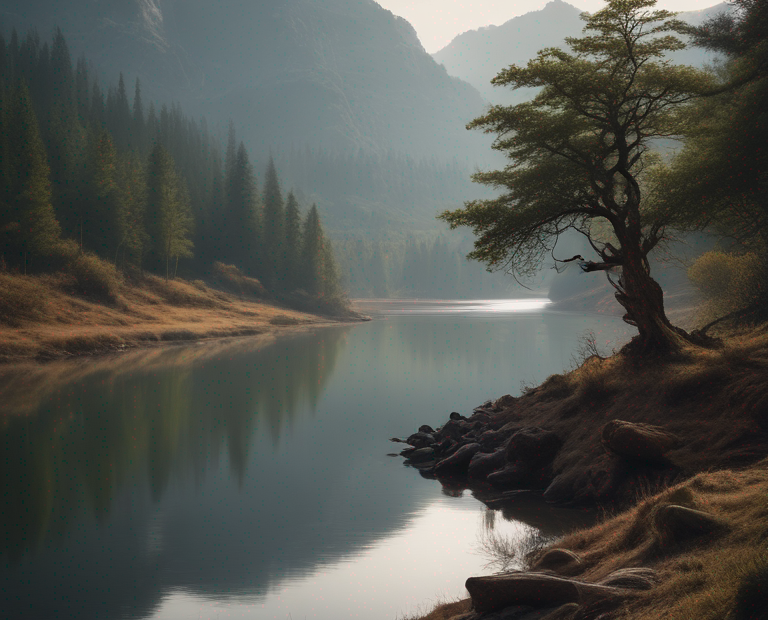R Ai Art: Exploring the Intersection of Robotics and Artificial Intelligence in Creative Expression
The world of art has always been a place where human creativity and imagination know no bounds. With the advent of robotics and artificial intelligence (AI), we are now witnessing the emergence of a new form of creative expression – r ai art. This innovative fusion is not only transforming the way we create, but also pushing the boundaries of what we consider art.
As we explore this exciting territory, it's essential to understand that r ai art is more than just a combination of robots and AI in an artistic context. It's about harnessing the power of machines and algorithms to create new forms of expression that were previously unimaginable. In this article, we'll delve into the world of r ai art, exploring its intersection with robotics and artificial intelligence.
The Dawn of R Ai Art
To understand the significance of r ai art, let's take a step back in time. The first AI-generated art dates back to the 1960s, when computer scientist Alan Turing created a program that could generate simple images. Since then, AI has evolved dramatically, and we've seen the rise of generative models like GANs (Generative Adversarial Networks) and neural networks.
In recent years, robotics has also made tremendous progress. Robots are now capable of performing complex tasks, from assembly lines to surgery. It's only natural that these two fields would eventually converge, giving birth to r ai art.
The Power of Collaboration
At the heart of r ai art lies collaboration – a synergy between humans and machines. This partnership enables us to create works that were previously unimaginable. For instance, AI can generate initial designs or patterns, which humans can then refine and shape into final pieces.
One notable example is the work of artist and engineer, Refik Anadol. He uses algorithms and robotics to create immersive installations that blend light, sound, and movement. In his piece, "Quantum Memories," he used AI-generated visuals to create an otherworldly experience that defies categorization.
The Role of Robotics
Robots play a crucial role in r ai art, allowing us to explore new forms of interaction and expression. By incorporating robotics into the creative process, we can generate complex movements, shapes, and patterns that were previously impossible to achieve.
For instance, roboticist and artist, Aaron Traylor, created a robot that could draw intricate designs using a combination of algorithms and human input. This collaborative approach enables us to push the boundaries of what's possible in art.
AI-Generated Art
While AI-generated art has been around for some time, r ai art takes it to the next level by incorporating robotics into the creative process. By combining AI-generated visuals with robotic movements, we can create interactive and immersive experiences that engage audiences like never before.
One notable example is the work of artist, Zachary Lieberman. He uses AI-generated patterns and robotics to create sculptures that change shape in response to sound and movement. This innovative approach blurs the lines between art, music, and technology.
The Future of R Ai Art
As we continue to push the boundaries of what's possible in r ai art, it's essential to consider the future implications of this intersection. With advancements in AI and robotics, we can expect to see even more complex and dynamic forms of creative expression emerge.
For instance, we may see the development of robots that can learn and adapt to new artistic styles, allowing for a new level of collaboration between humans and machines. This could lead to entirely new forms of art that defy our current understanding of what's possible.
FAQs
Q: What is r ai art?
A: R ai art is the intersection of robotics and artificial intelligence (AI) in creative expression, resulting in innovative forms of art that combine human imagination with machine-generated visuals and movements.
Q: Can AI-generated art be considered "real" art?
A: While AI-generated art has sparked debate, many argue that it can indeed be considered "real" art. The key lies in the creative process and the intention behind the artwork.
Q: How does robotics contribute to r ai art?
A: Robotics adds a new dimension of interaction and expression to r ai art, enabling us to generate complex movements, shapes, and patterns that were previously impossible to achieve.
Key Takeaways
- R ai art is the intersection of robotics and AI in creative expression.
- The collaboration between humans and machines enables new forms of artistic expression.
- Robotics contributes by allowing for complex interactions and expressions.
Table: Evolution of AI-Generated Art
| Year | Artwork/Technique |
|---|---|
| 1960s | Simple image generation (Alan Turing) |
| 1980s | Fractal art and algorithmic music |
| 2000s | Generative models like GANs and neural networks |
| 2010s | AI-generated installations and sculptures |
Explore the Intersection of Robotics and Artificial Intelligence in Creative Expression
To learn more about r ai art, visit r ai art and discover the latest developments in this exciting field.
